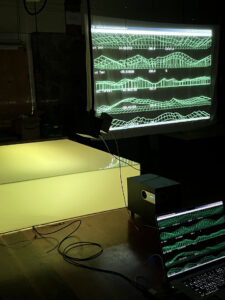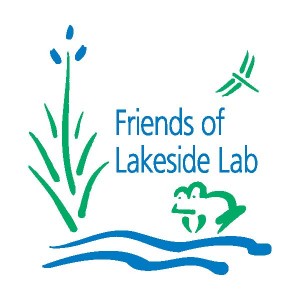Johnny DiBlasi’s Transcoded Ecologies
by Johnny DiBlasi
I am writing this as a reflection back on my AiR at Lakeside Lab Iowa, Lake Okoboji. As an artist, researcher, and educator, the Lakeside Lab AiR gave me a very rare gift for two weeks – the gift of time.

During this time I’ve been writing, reading, and making progress on a new phase of projects that I put under the umbrella research agenda that I call Transcoded Ecologies. Through this project, I am exploring the creation of a networked, interconnected system of bio-technological objects or ‘nodes’. These objects are very shy, and like most things in nature, are simultaneously quiet and loud or studied and mysterious. Also, they go by their own time.
During this time, I’ve researched the area around the lake and have gotten to know the north-western landscape of Iowa. A picture began to form of the Deep Time of this natural area of the prairies that used to be here before the crops. I’ve become more familiar with the ecosystems that exist outside of Des Moines and Ames areas of Iowa. I spoke to an amalgamation of scientists, students, and visitors about their interests and studies and research. Throughout this process, I’ve spent some time immersed within the world of Diatoms. Both conceptually in the lab and physically while in the water. I explored their structure, organization, and morphology, and this has led me to my continued goal of exploring these patterns that form in nature and which could one day become a new artistic collaborator in my inquiry into the aesthetics of naturally occurring systems.
During this time, I’ve been coding. I setup the technological system of sensors and circuits to create the lighting and soundwave aspects of the TE project (pictured here). I worked on this software which takes in electronic information and environmental data points and translates this data into visible light waves and a collection of soundwaves. I’ve had the time to test, debug, and finish writing the software to drive the Transcoded Ecologies project. In a way, my time at Lakeside Lab has been spent beginning a new stage of this project which is also supported by the Center for Excellence in the Arts and Humanities Digital Scholarship research grant. While finishing the software application for the artwork’s system of light and sound, I also worked on sketching and outlining the next major stages of the project to unfold over the next academic year. Mainly, I designed the physical structure or sculptural aspect of the frames and lightboxes that represent the main structural aspect of the project.
This open source software is now published on GitHub as part of the project and be an aspect of both the documentation and the reporting (for the grant organizations): https://github.com/JohnnyDiBlasi/Transcoded-Ecologies. For the first few days in the studio, I setup the LED lights along with the sound system. During these times in the studio, I wrote the code that takes in the enviornmental data – the sensors that recorded CO2, light, temperature, and electrical current. As I gathered this data, I wrote the application’s code to take this data and translate it into an array of values that are then sent through a serial port into the computer. I also wrote the second piece of software which receives these values from the serial port, and then maps the data into OSC data. The software then takes this OSC information and translates it into sound wave frequencies. The software then generates the various sound waves that are projected back into the space (and eventually, will be generated and projected back into the microecosystem of plants or young trees)
Finally, I’ve had the time to read and research quite a bit of new books and articles to use both to inform my project as well as my linked educational and pedagogical practice.




